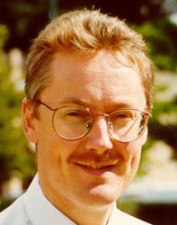Ogmius Exchange Part III
Reflecting on good and useful climate models: A response to Thomas Chase by Mike Hulme
 In his article ‘A caution to policymakers: climate models fail key tests for accuracy’, Thomas Chase focuses on the fidelity of model outputs as the key test for judging their usefulness for policy- and decision-making. He offers evidence that current climate models remain deficient in this regard, especially with respect to their simulations of future climate under conditions of substantial additional greenhouse gas forcing. He concludes that results from climate models should be used ‘with caution as guides to policy decisions’. On the terms that Chase approaches the issue this may be a sensible enough conclusion. The operative words of course are ‘with caution’, the interpretation of which is a matter of judgment and convention that will play out differently in different cultures, traditions and decision-contexts.
In his article ‘A caution to policymakers: climate models fail key tests for accuracy’, Thomas Chase focuses on the fidelity of model outputs as the key test for judging their usefulness for policy- and decision-making. He offers evidence that current climate models remain deficient in this regard, especially with respect to their simulations of future climate under conditions of substantial additional greenhouse gas forcing. He concludes that results from climate models should be used ‘with caution as guides to policy decisions’. On the terms that Chase approaches the issue this may be a sensible enough conclusion. The operative words of course are ‘with caution’, the interpretation of which is a matter of judgment and convention that will play out differently in different cultures, traditions and decision-contexts.
But there are many other dimensions to consider when contemplating the relationship between a climate model and decision-making. Chase not only assumes that accuracy – verisimilitude between model and reality - is the key to a good climate model, he also implies that a primary purpose of models is to allow decision-makers to base decisions on their results. Both assumptions – implicitly made in the article referred to - need challenging. They need challenging because they are so widespread. The IPCC has – inadvertently perhaps - elevated the political significance of climate model performance to a new level and a dominant approach to climate change adaptation – namely decision optimization - places a high premium on ‘accurate and precise’ model predictions (see Dessai et al., 2008).
There are different ways of judging whether a climate model is ‘good’, and faithful replication of present-day climate is only one such approach. A good model could also be the one which is designed to represent known physical processes to the greatest level of complexity. On the other hand it could be one that is relatively simple in design, easy to use and transparent to its policy audience. Or using the idea of co-production between science and society, a good model could be the one that is co-designed between scientist and decision-maker and which is best fit for a purpose.
There are different ways, too, of conceiving the purpose(s) of climate models. Many people may assume the primary purpose is to offer predictions of future climates for ‘guiding policy’. But models perform other functions as well. Conventionally, models function within science as systematic devices to organize knowledge and to reveal what we don’t know about complex systems, as much as they exist to offer predictions based on what we think we do know. They have a heuristic rather than a predictive function. This perspective on models was nicely revealed by veteran climate modeler Syukuro Manabe in his classic 1975 paper which described the first 2xCO2 experiment with a 3-D atmospheric General Circulation Model: ‘It is not advisable to take too seriously the quantitative aspect of the results obtained in this study. Nevertheless … this study … identifies the various requirements that have to be satisfied for the study of the climate sensitivity with a [climate] model.’ (Manabe and Wetherald, 1975: 13).
And from a sociological perspective we must be aware that models in general – and climate models are certainly no exception - can acquire a role for one social group to exert power over another (see Shackley and Darier, 1998). This is why we have seen over the years many arguments about climate change policy reduced to arguments about the veracity of one or more climate models.
Chase offered a note of caution to policy-makers about overly relying on climate models to guide decisions. His cautionary tale must be extended also to the modelers themselves, who must reflect critically on the purposes of their enterprise. As Jerry Ravetz alerts us: “In the sense of the classical philosophy of science, all our models are trivially ‘false.’’ (Ravetz, 2003: 65).
Mike Hulme
School of Environmental Sciences
University of East Anglia
hulme@uea.ac.uk
Continue to read Part IV: Closing Thoughts by Roger Pielke, Jr.

